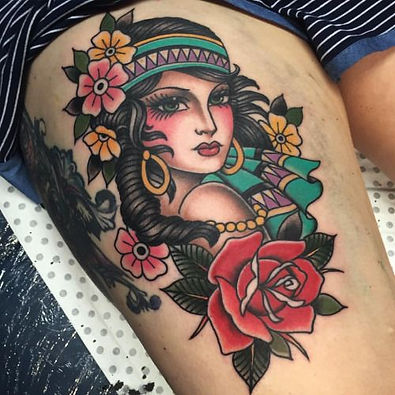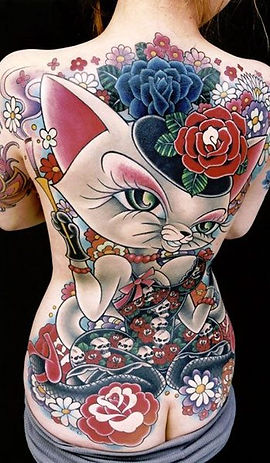the wordsmith
sarah james
tattoos are art

While tattooing is generally more accepted in the 21st Century than in past centuries, it is still met with considerable contestation. Many regard tattoos as ‘scribbling’ or ‘defacing’ one’s body. However, there is an incredible amount of artistry that goes into creating a tattoo design and then transferring that design into the client’s skin.
Despite not having any tattoos of my own, I have always regarded them as an art form. It was only when I watched the tattoo artist competition TV show Ink Master, that I realised just how artistic tattoo artists have to be.

Tattooed by Matt Buck in Ink Master Season 10
Tattoos usually begin with the client having an idea for a design. That design is then discussed with the tattoo artist, who helps to direct the client in regard to what is practical, which location on the body is best and what design will best suit that location.
While some tattoos are traced straight from flash designs (already existing designs), most are drawn from scratch. Artists will often use reference pictures as inspiration and to help draw accurate proportions, but designs can also be entirely made up by the artist. Portrait tattoos are usually traced as they need to be as accurate to the photo or painting as possible.


Tattoo design on paper (left) and on skin (right)
Tattoo artists also have to make decisions as to how to best fit the tattoo design to the client’s body. A tattoo placed randomly on the body will not be aesthetically appealing. The design therefore needs to flow with the curves and shapes of the body, so as to not look oddly placed. Those who criticise tattoos usually don’t realise that this amount of drawing and thought goes into creating amazing designs.
Another thing which is often overlooked is that tattoo artists have to train for several years as apprentices before they are able to tattoo at a professional level. This encompasses how to draw and place tattoos but also how to work with the various needles and machines. The most commonly used machines are coil and rotary machines. A needle used to create line work usually comprises 3-5 needles grouped together, while needles used to shade are a group of 9 to 25 needles. Alongside this, artists also have to learn how to work with different skin types.

Shading needle
Typically, Caucasian skin is the easiest to tattoo as it is light shows up both black and grey and colour. Learning how to tattoo on darker skin tones is a skill itself. Older skin also tends to be trickier to tattoo as it is not as firm as younger skin. Scars and stretch marks present problems as scars in particular are often more painful to tattoo over and the skin does not pick up the pigment as well as unblemished skin does.
Along with learning to work with different skin tones, artists also have to learn how to choose the correct colours for their tattoos but some artists do choose to specialise in black and grey tattoos. Another decision is whether artists want to specialise in one specific style of tattooing. A few examples of a myriad of different styles are:
American Traditional

Japanese

New School

Realism

Watercolour

Nowadays, all tattooing performed at professional tattoo shops is done in a sterile environment. The artist wears gloves, the needles are all new and sterile (so medical grade) and the machine has been sterilised in a machine called an autoclave. The table or chair the client sits in while getting tattooed is also sanitised before every tattoo session.
I would tend to say that those who dislike tattooing or regard it as ‘defacing’ the body are ill-informed because they don’t know the amount of work that goes into producing a tattoo design. It’s not as simple as copy and pasting an image into someone’s skin.